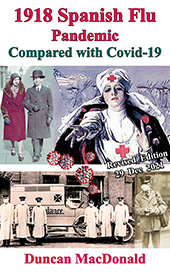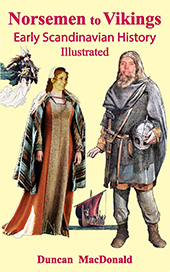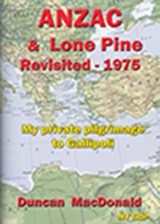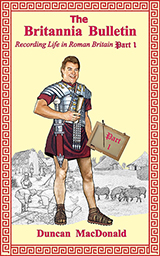Culann - Warrior Monk
7th century life in Ireland & Britain
Duncan MacDonald
Jakarta 30 May 2012
Some of the illustrations relating to the book will be posted on this web site for your consideration and comments.
We wish to show how people dressed and the type of buildings they lived in 7th century Ireland and Brit1ain. Hopefully this e-book will shed a little light on a period often referred to as 'the dark ages'.
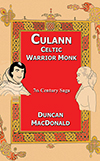 Stop Press: dMAC Digest is sponsoring the download of
Stop Press: dMAC Digest is sponsoring the download of
Culan, Celtic Warrior Monk e-book absolutely FREE, for a limited time.
Available on Apple iPad/iBooks, Kindle, Nook, Sony, Kobo & most e-reading apps including Stanza & Aldiko
>>Click here to download the e-book from Smashwords
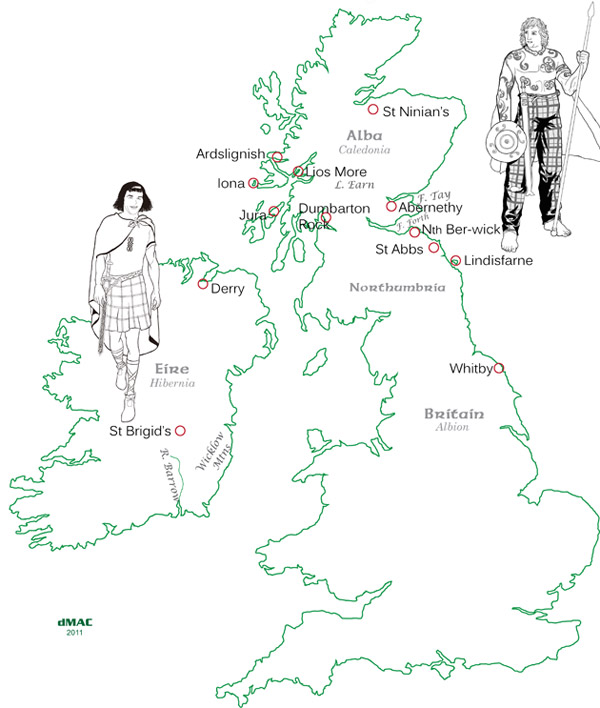
Celtic Monasteries in the 7th Century CE (Common Era)

Young Culann with his father, The Smith
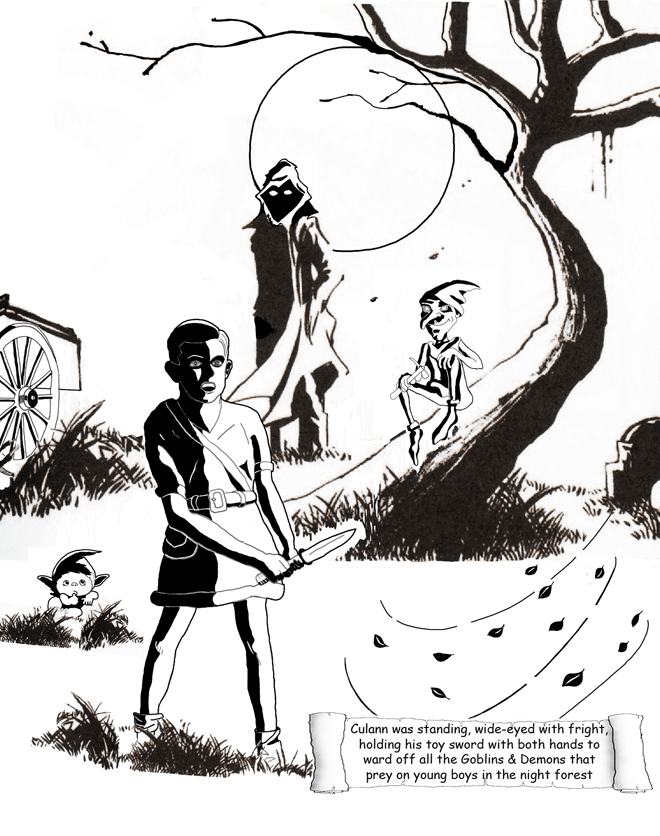
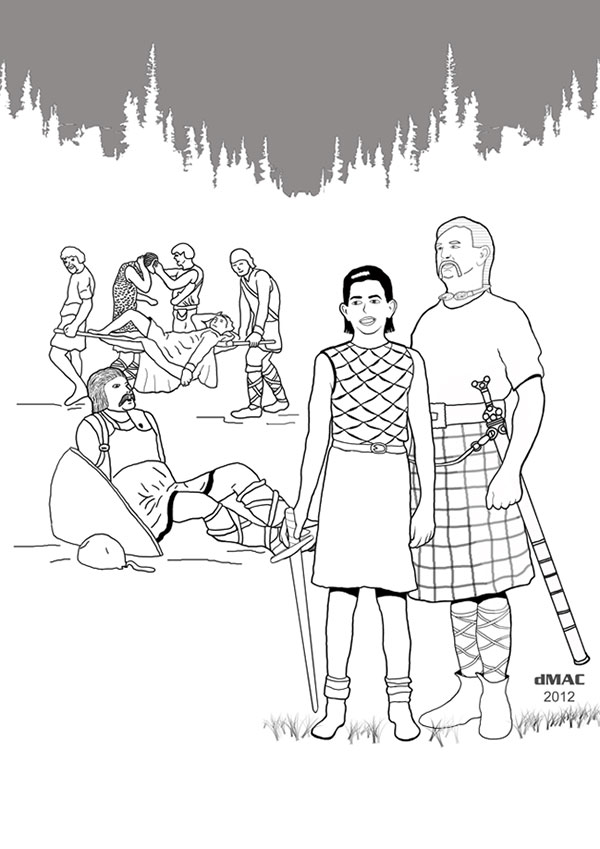
Breuse waitched over his ward Culann with a father's pride. Culann could hold his own against Fianna twice his age.
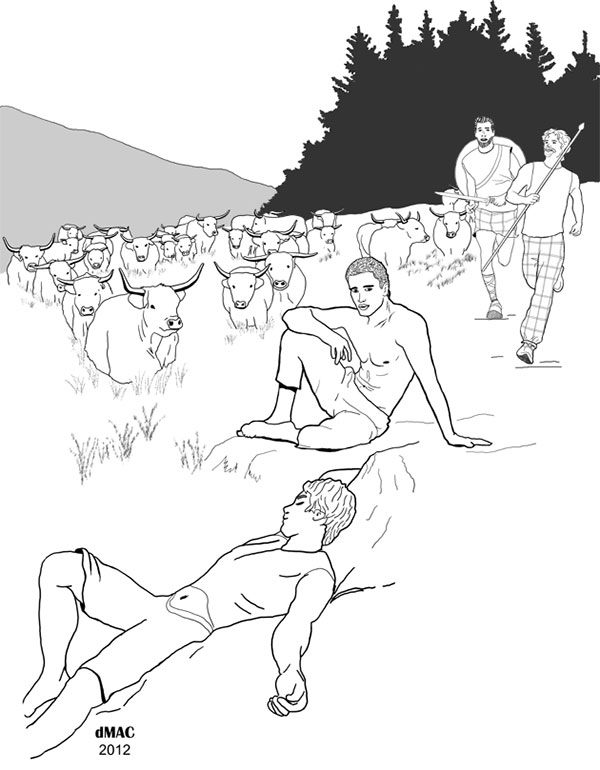
The Cattle Raid
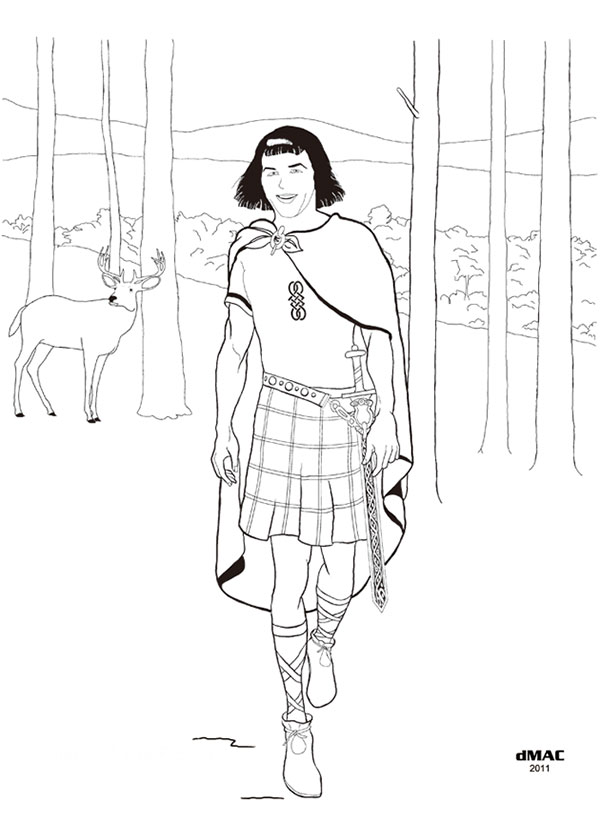
Culann of the Fianna

Fea in her friend Odra's home.
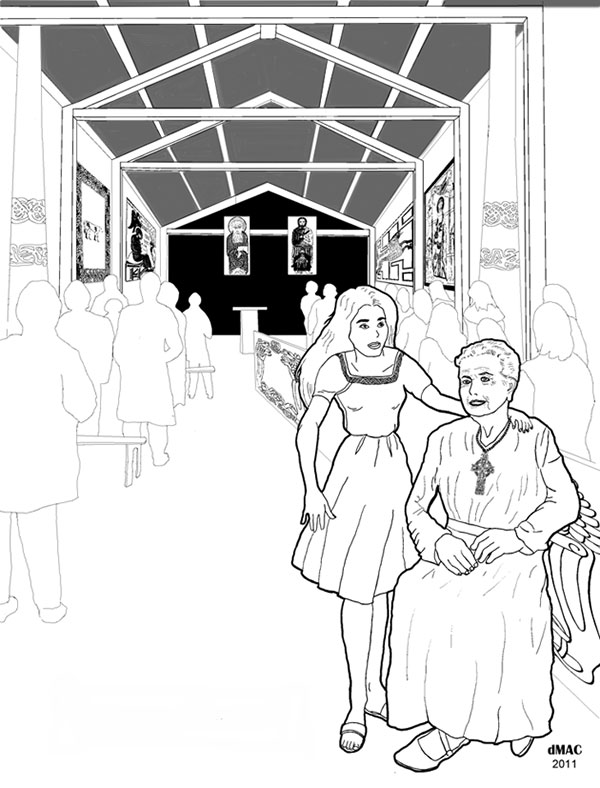
Fea and Sister Mish in St Brigids.
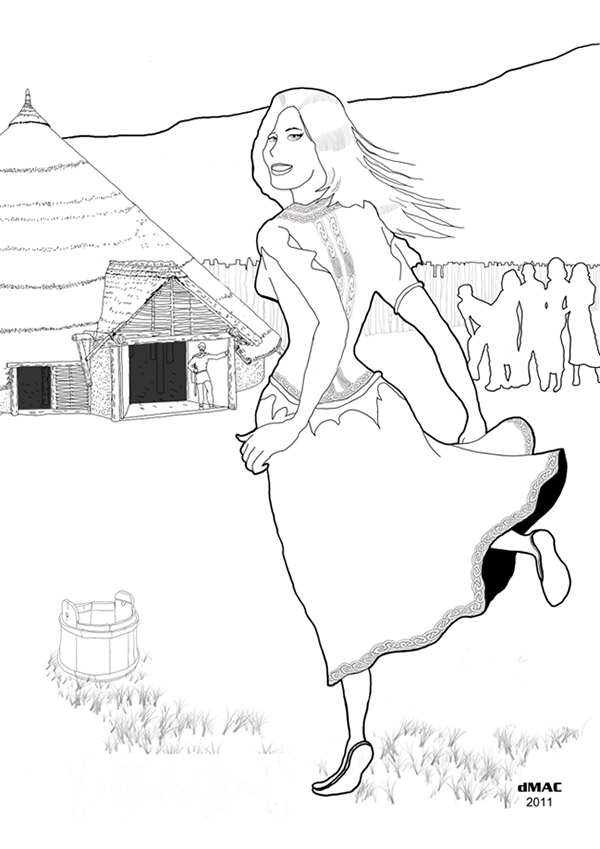
You may call me Fea.
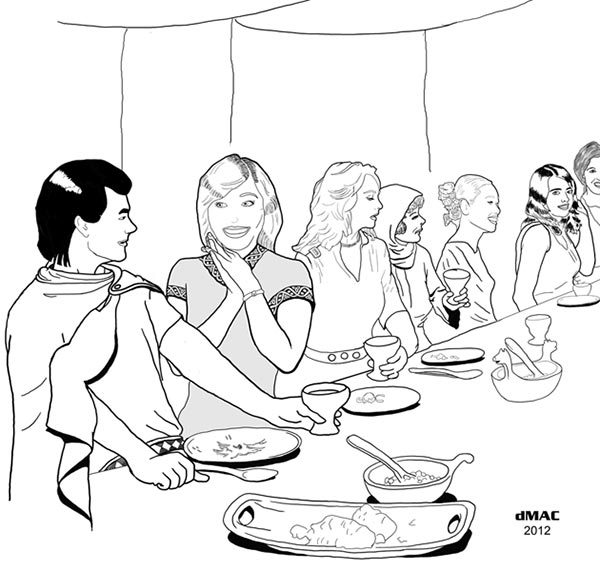
The dinner passed in a blur for Culann who sat mesmerised next to the real Fea.

Culann rescuing Princess Fea.
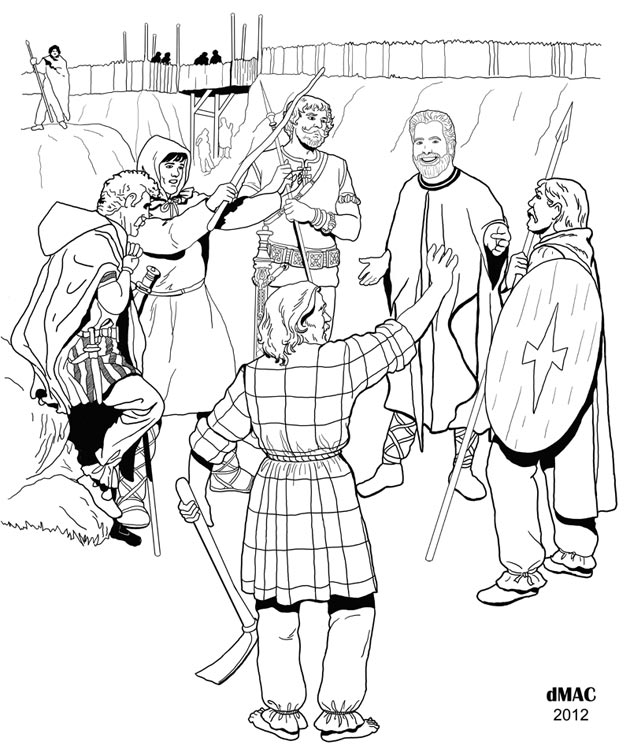
Sigmall's little rag-tag force assembled at his hill fort.
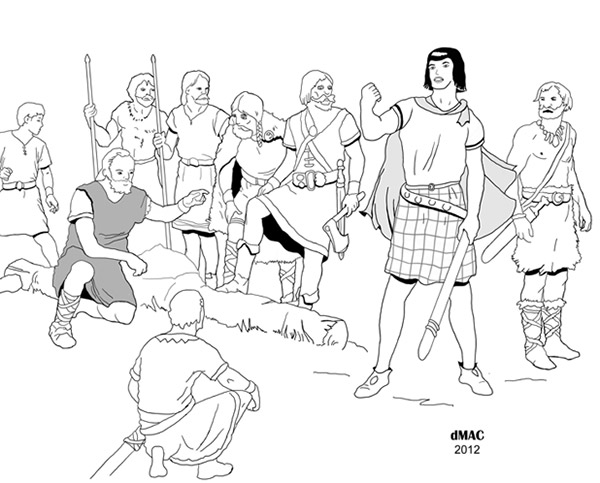
The Fianna looked listless, leaderless and demoralised. "I need four brave men to join me on a mission."said Culann.

Culann raised the dead King's golden torc up to the heavens and utterred a terrible war cry.
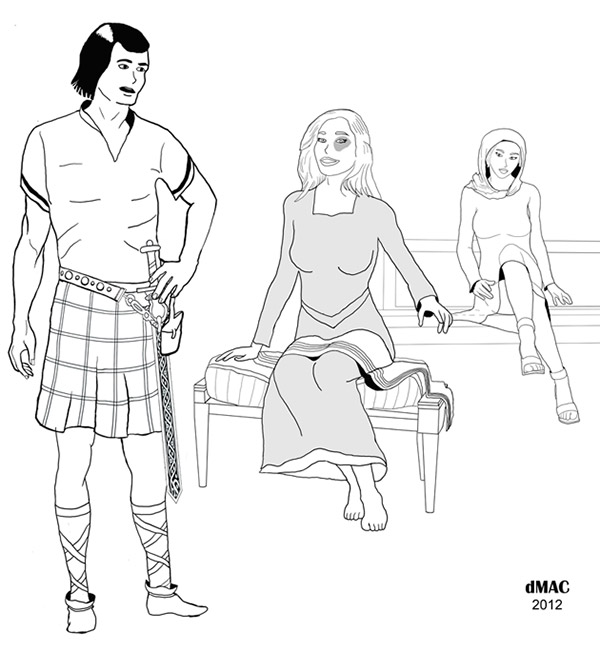
Culann's fateful meeting with the Lady Fea at St Brigits.
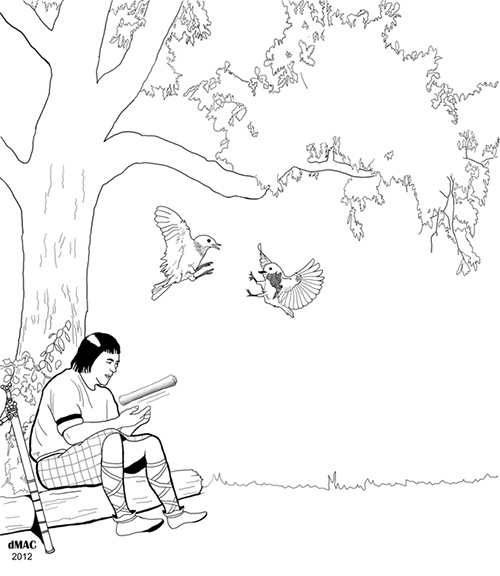
Culann noticed the parchment lying on the ground. He carefully picked it up. It was addressed to someone, but the writing was in Latin. 'Great, I don't read Latin.' But he could understand one word at the bottom - Iona
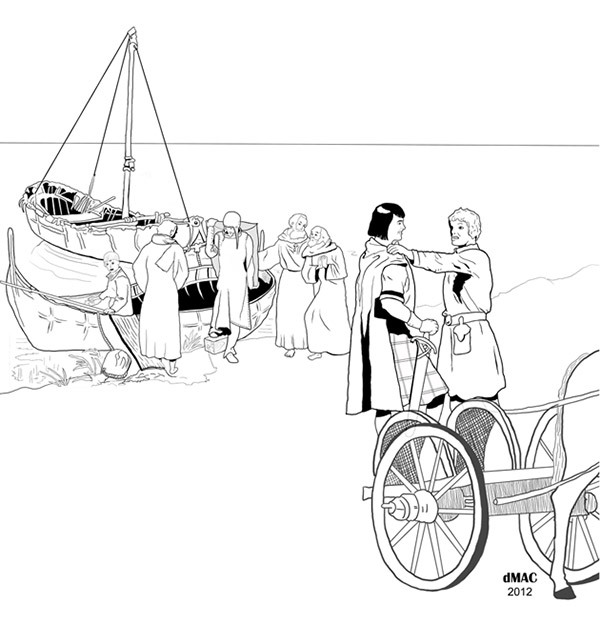
Culann wished his young companion 'God Speed' and gave him his prized horse and chariot.
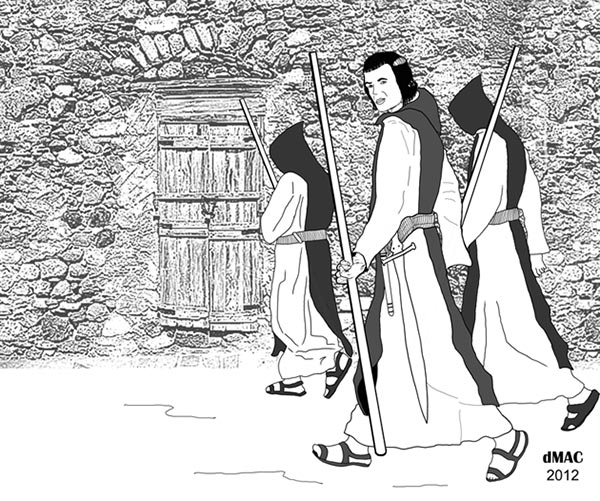
Culann with some of his students from his self-defense classes. A warrior leaning to become a monk and quietly teaching monks to become warriors.
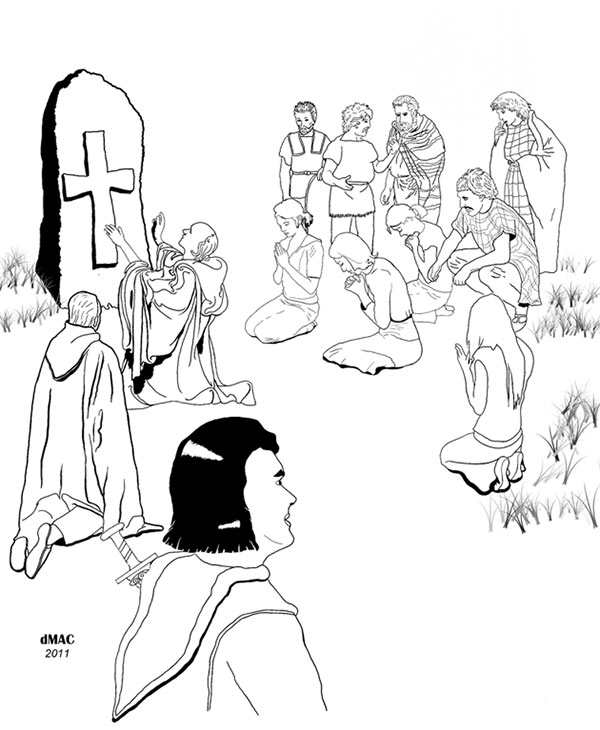
Culann watched as the villagers' gasped in wonderment as they observed the carved cross on the ancient stone.
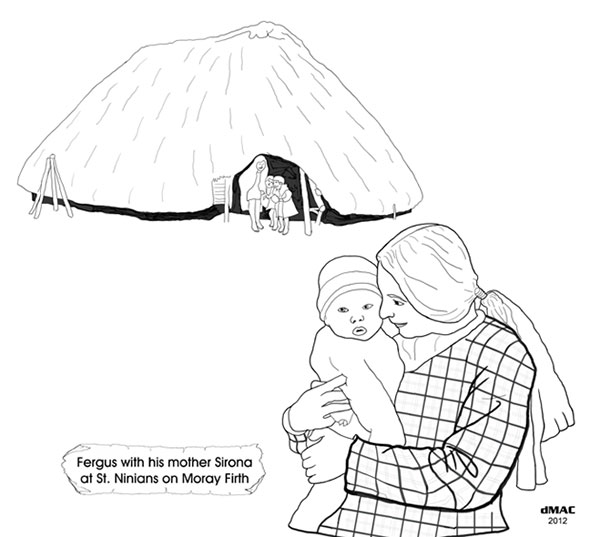
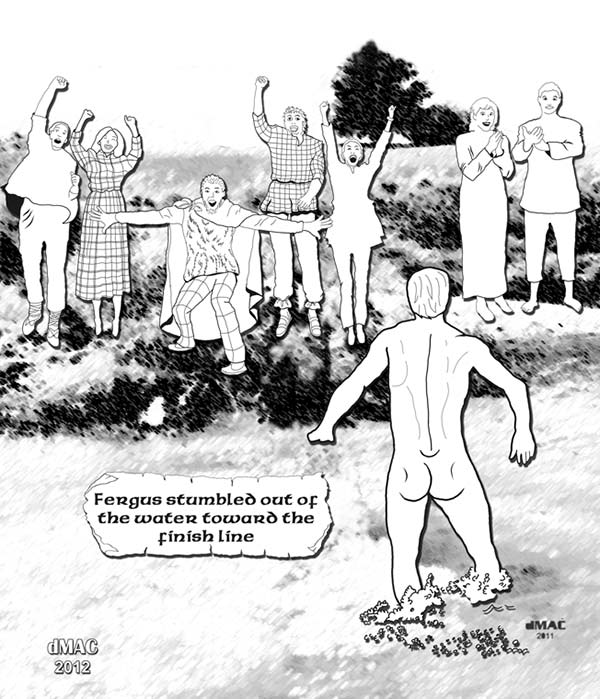
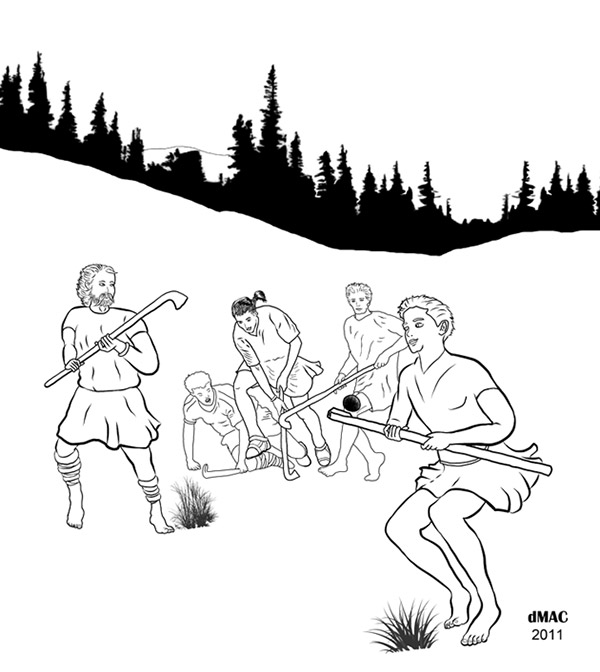
Fergus excelled at 'Shinty' which was considered ideal training for typical Celtic warfare.
Shinty was played over two thousand years ago in Caledonia by the Picts. It was introduced by the Celts from Ireland where it is called Hurling. From it developed the modern games of Field Hocky, Ice Hocky and Lacrosse. Some shinty players have asserted that Quidditch, the fictional sport in the Harry Potter book and film series by J.K. Rowling was inspired by shinty.
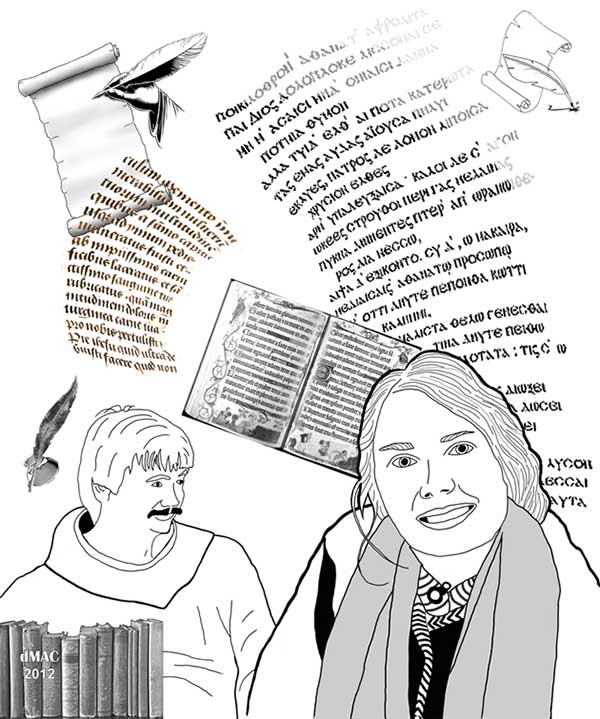
Sirona briefed Brother Bec before he set off to Lindisfarne with Fergus. "Fergus needs to learn to read and write. I want my son to have great knowledge."
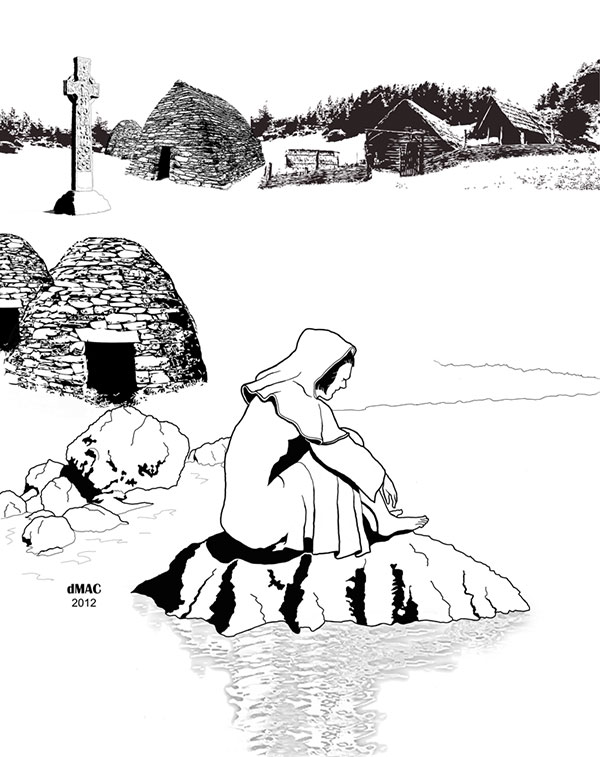
Culann blindly turned and walked to the shore and sat there mindlessly on a rocky outcrop. He cried, covering his face with his cloak so no one would see.
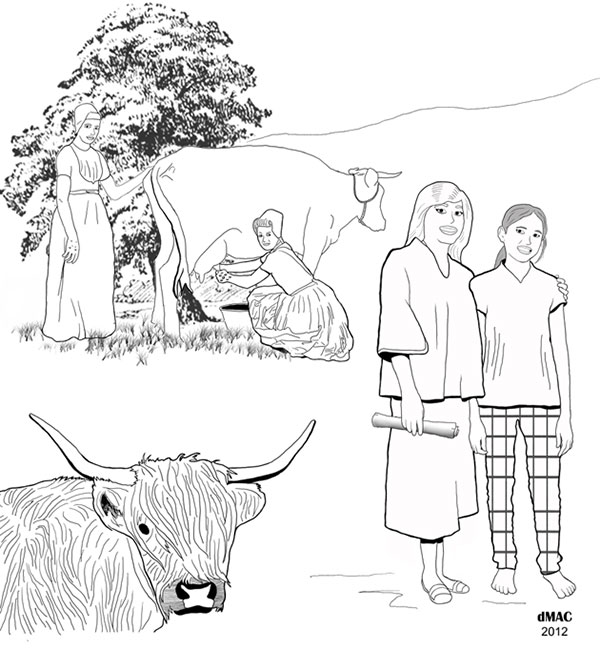
Fea with young Sister Tamara and the milk maids.
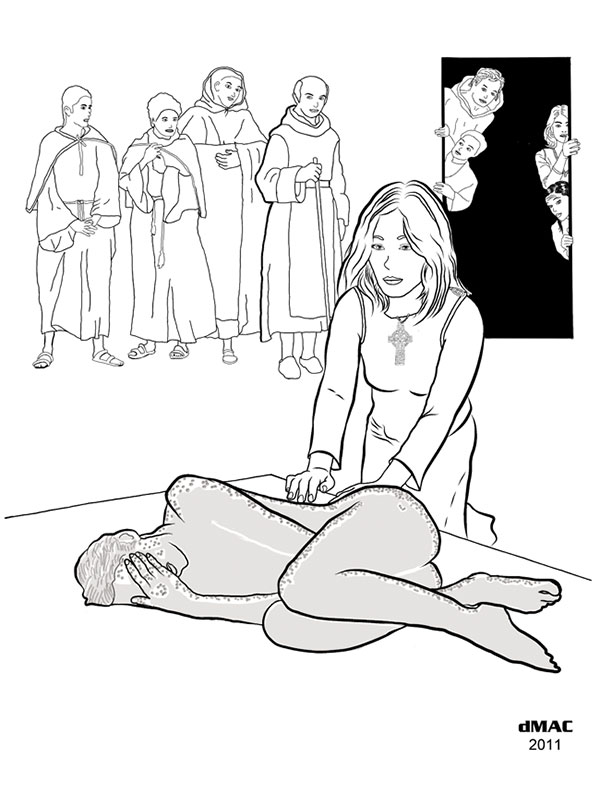
Fea bathed the sailor. He had a rash with large pustules, some the size of her finger all over his face and most of his body. The skin had turned a dull dark colour. He had a high fever and was vomiting.
A number of monks and sisters gathered at the doorway of the infirmary. They discussed in hushed tones the unprecedented event of a sister working in the male infirmary.

Brother Mullo talking to Fea in the aftermath of the plague. "Why don't you take the Greek texts to a monastery where they can translate them."
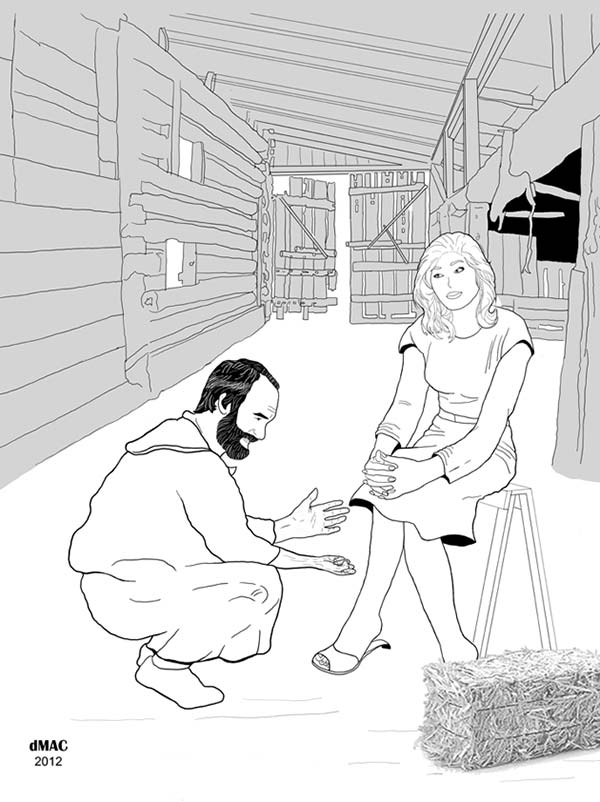
Brother Hesus confessing to Sister Fea on Jura.
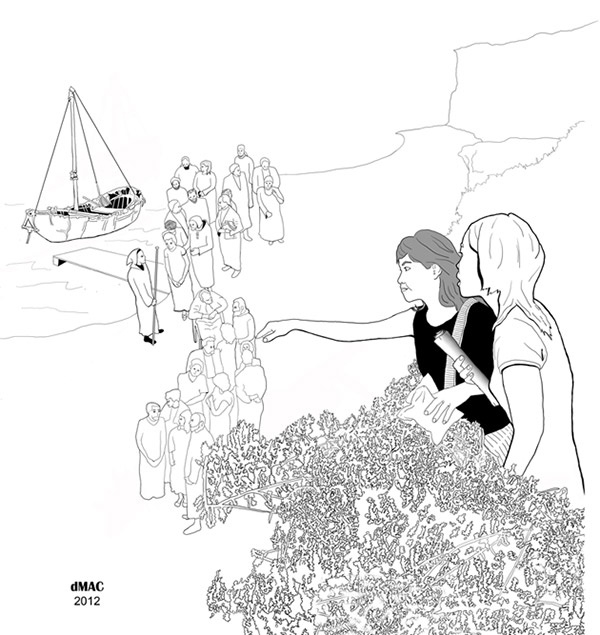
The two nuns watched the curach pull into the jetty far below. "Sister Fea" said the younger nun Tamara, "the boat from Iona is not due today. Whatever could they want?"
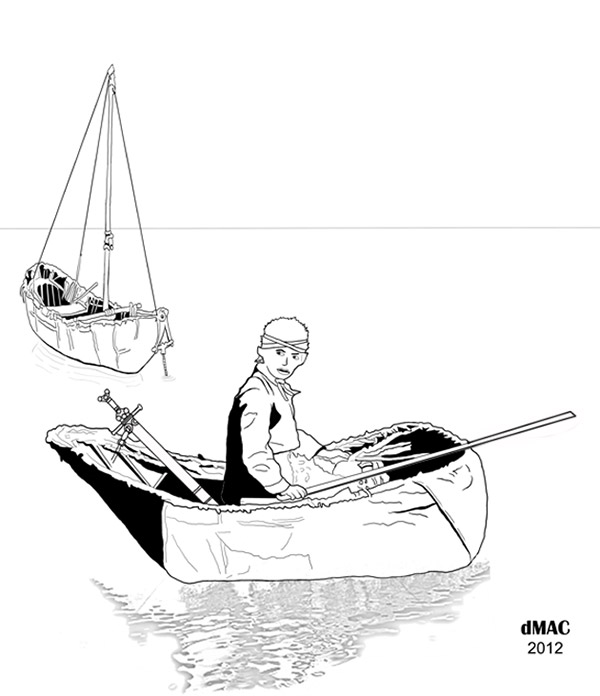
Fergus 'borrowed' a small curach to follow the Lindisfarne and Iona monks as they sailed south to Whitby.
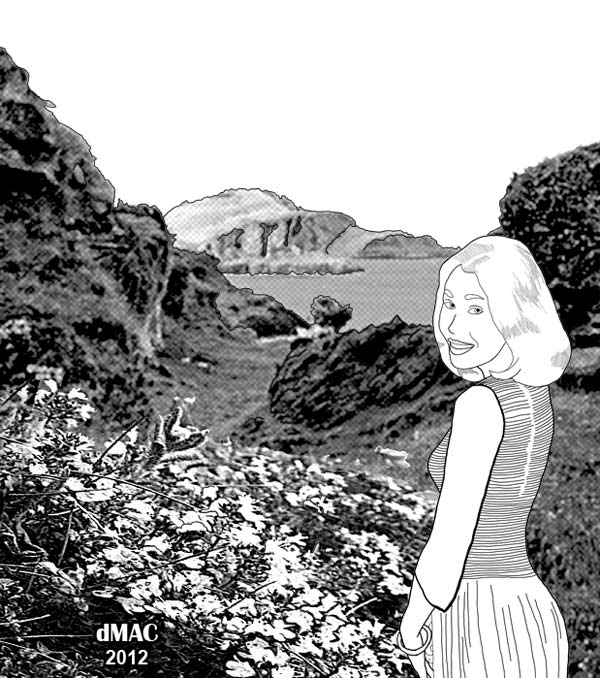
Sister Fea discovers Dandelion on Lios mor,(in Gaelic it means 'Great Garden') a fertile, low-lying island in the Inner Hebridies. It is now known as Lismore. It was a major centre of Celtic Christianity. The original monastery was founded by Saint Moloug in AD 562.
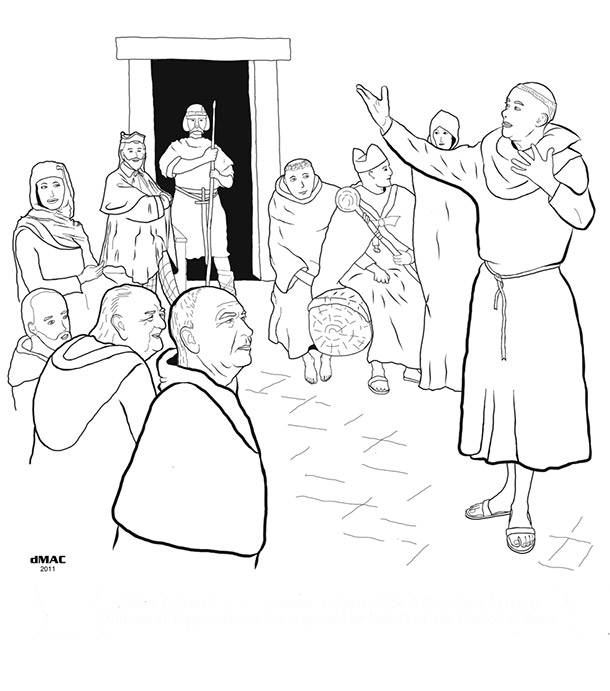
Abbott Colman with his Celtic monks, Abbess Hilda and King Oswy, listen to Wilfred of Rippon deliver his presentation on behalf of the Church of Rome.
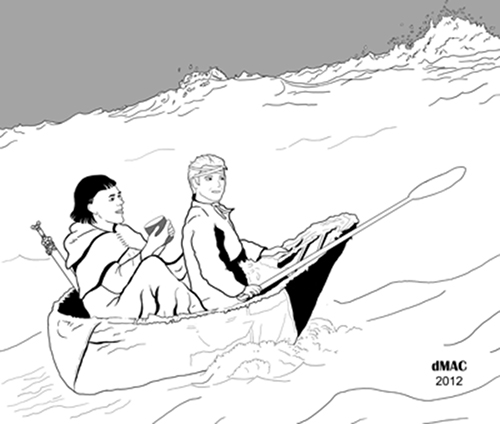
Culann and Fergus paddled all the second day and into the night. They swapped roles of paddling and bailing with the drinking cup
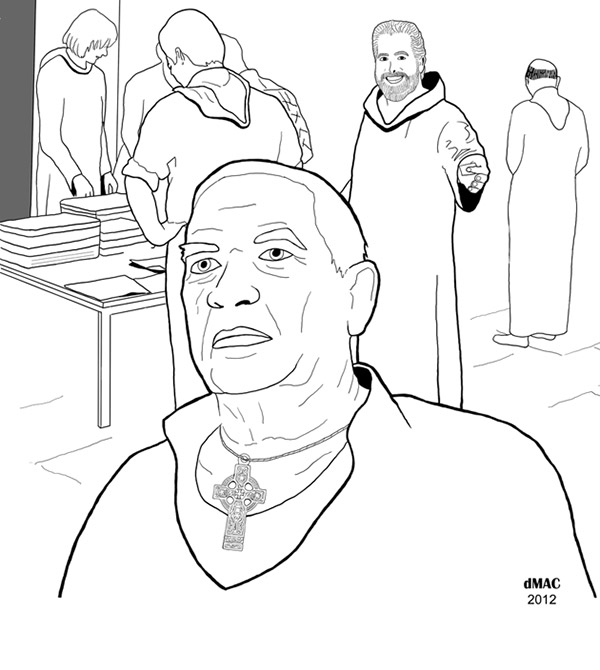
Abbot Colman was quiet and withdrawn. His beloved Celtic Church was to be no more. Brother Bryan took it upon himself to organise their departure from Whitby.
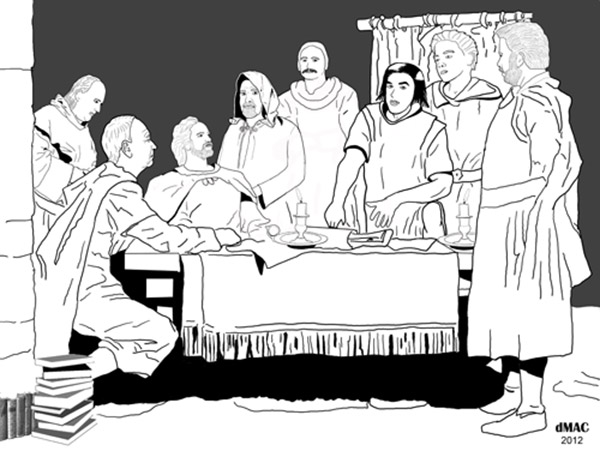
Culann, Fergus with Brother Bryan and Brother Bec, entered Colman's small candle-lit room.

Pamp the Irish Bard at St. Abbs
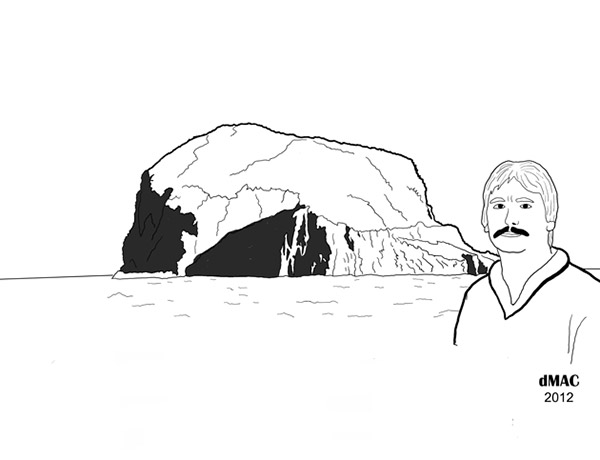
Brother Bec waiting at North Bere-wick for Culann & Fergus to arrive from St Abbs. Behind him is the local landmark Bass Rock. North Berwick means North 'barley farmstead' ('bere' in Old English means 'barley' and 'wic' in Old English is 'farmstead'). The word North was applied to distinguish this Berwick from Berwick-upon-Tweed, which throughout the Middle Ages the Scots called South Berwick.
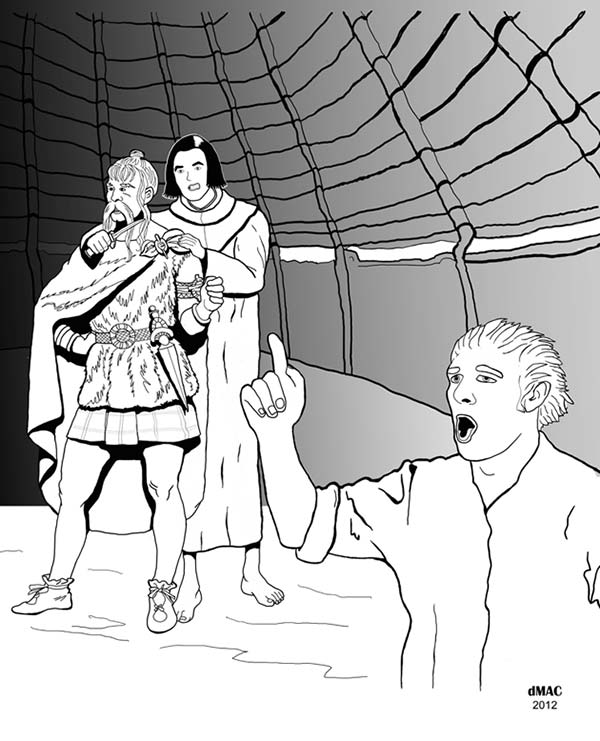
"Don't . . ." yelled Fergus. But the king's head was yanked back and Culann's knife was at his throat. "We'll see who is safe around here" hissed Culann.
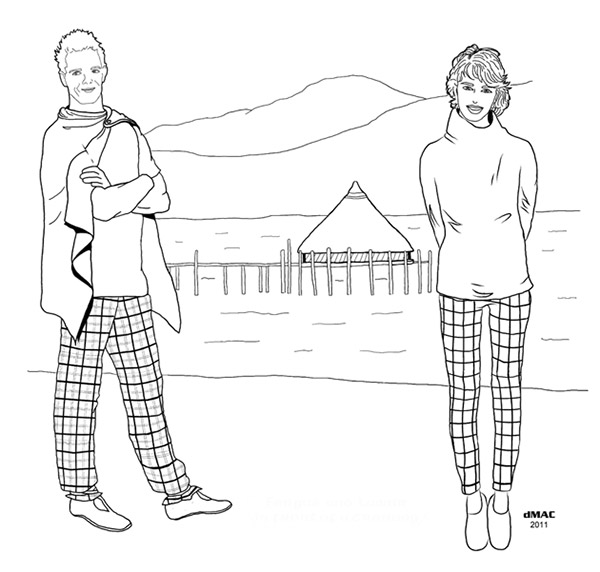
Fergus and Lasair in front of a crannog.

"Well, well, we have more visitors." said the Angle leader.
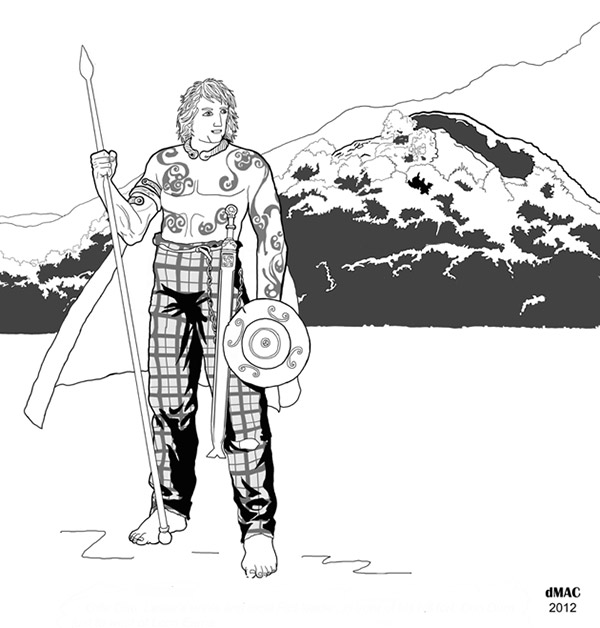
Gille Dhu, Lasair's uncle and local Pict leader in front of his hill fort Dun Durn, just west of Loch Earn.
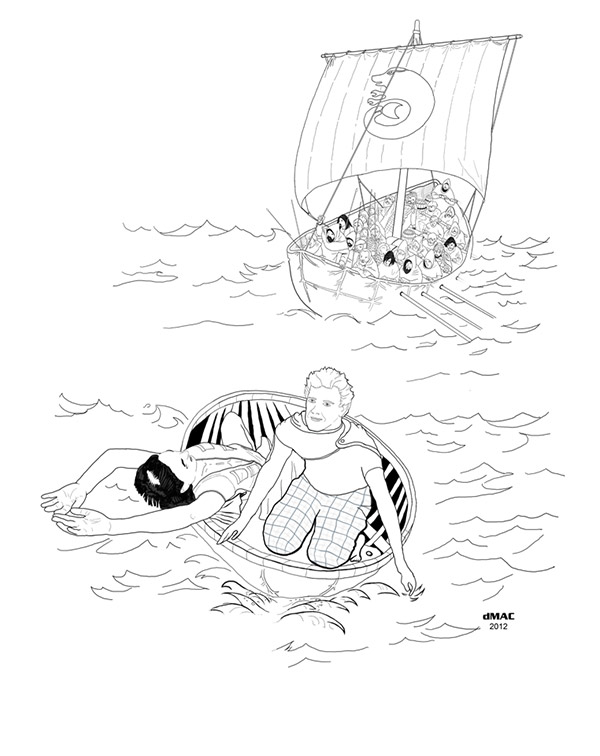
Culann and Fergus pursued by a Scotti currach on Loch Etive
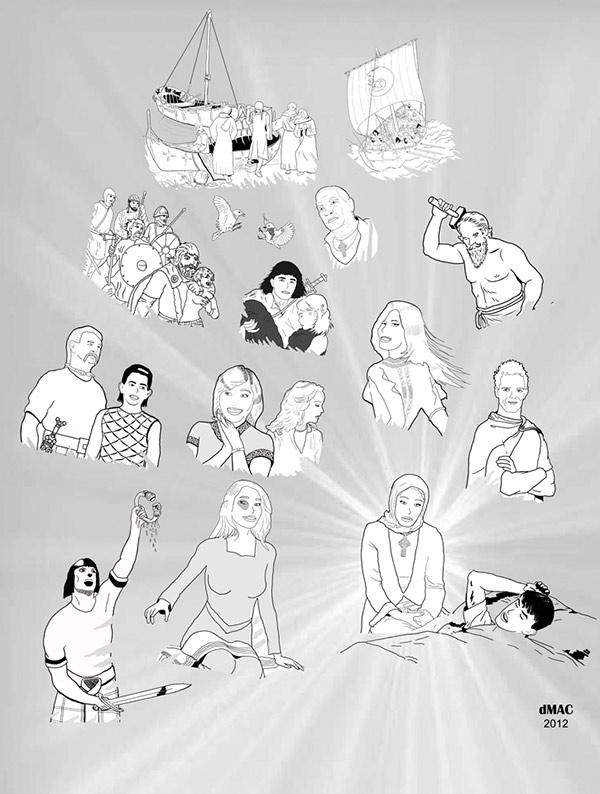
Culann hallucinating
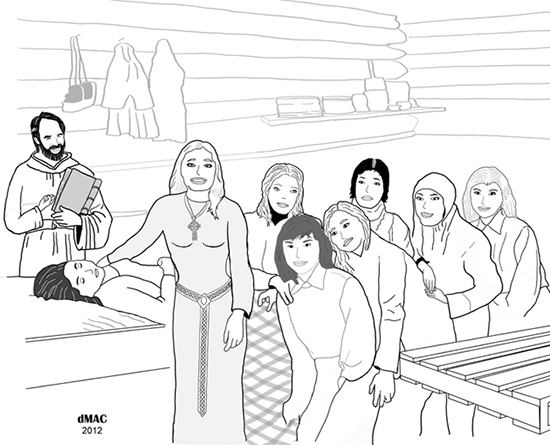
Sister Fea with Sister Tamara and her 'Milk Maids', observed by Brother Hesus at the Lios mor Infirmary
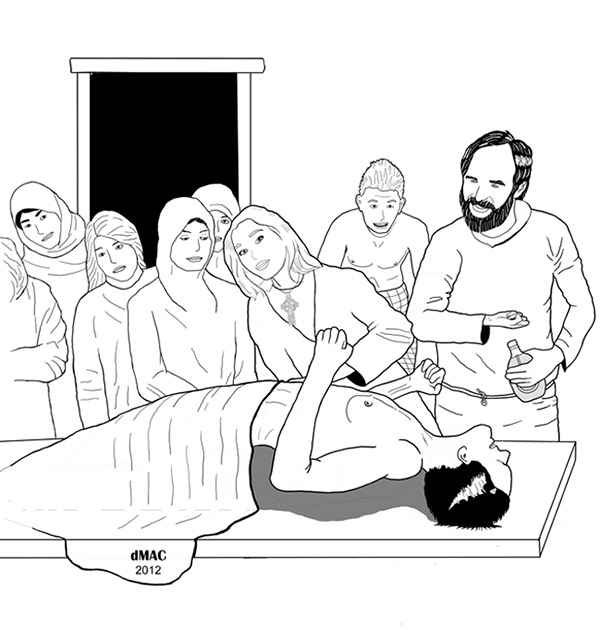
Saving lives - Fea with her milk maids, Fergus, Hesus and Culann
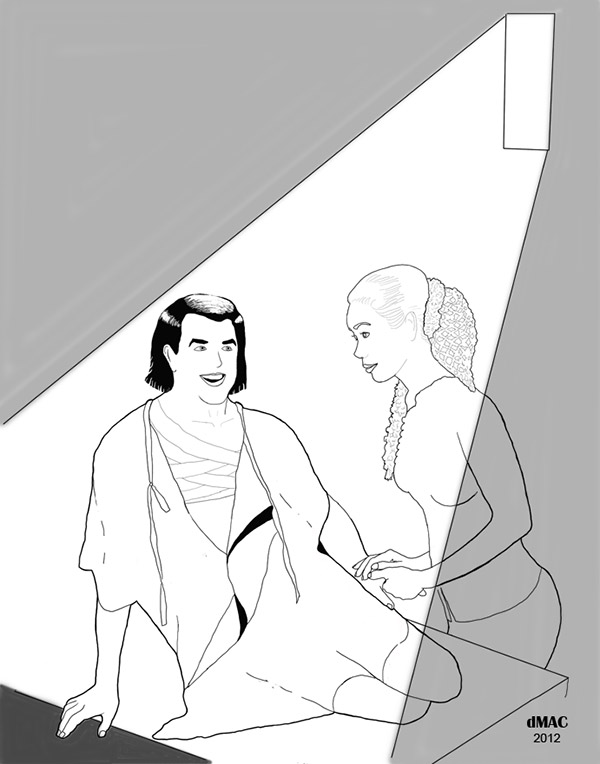
Just then a beam of sunlight came through the window, bathing Culann and Fea in its golden light - an omen for a brighter future?
The complete historical novel can be downloaded as a FREE e-book on Smashwords.
Available on iPad / iBooks, Kindle, Nook, Sony, & most e-reading apps including Stanza & Aldiko.
Just click the following link
>> download free e-book Culann Celtic Warrior Monk

